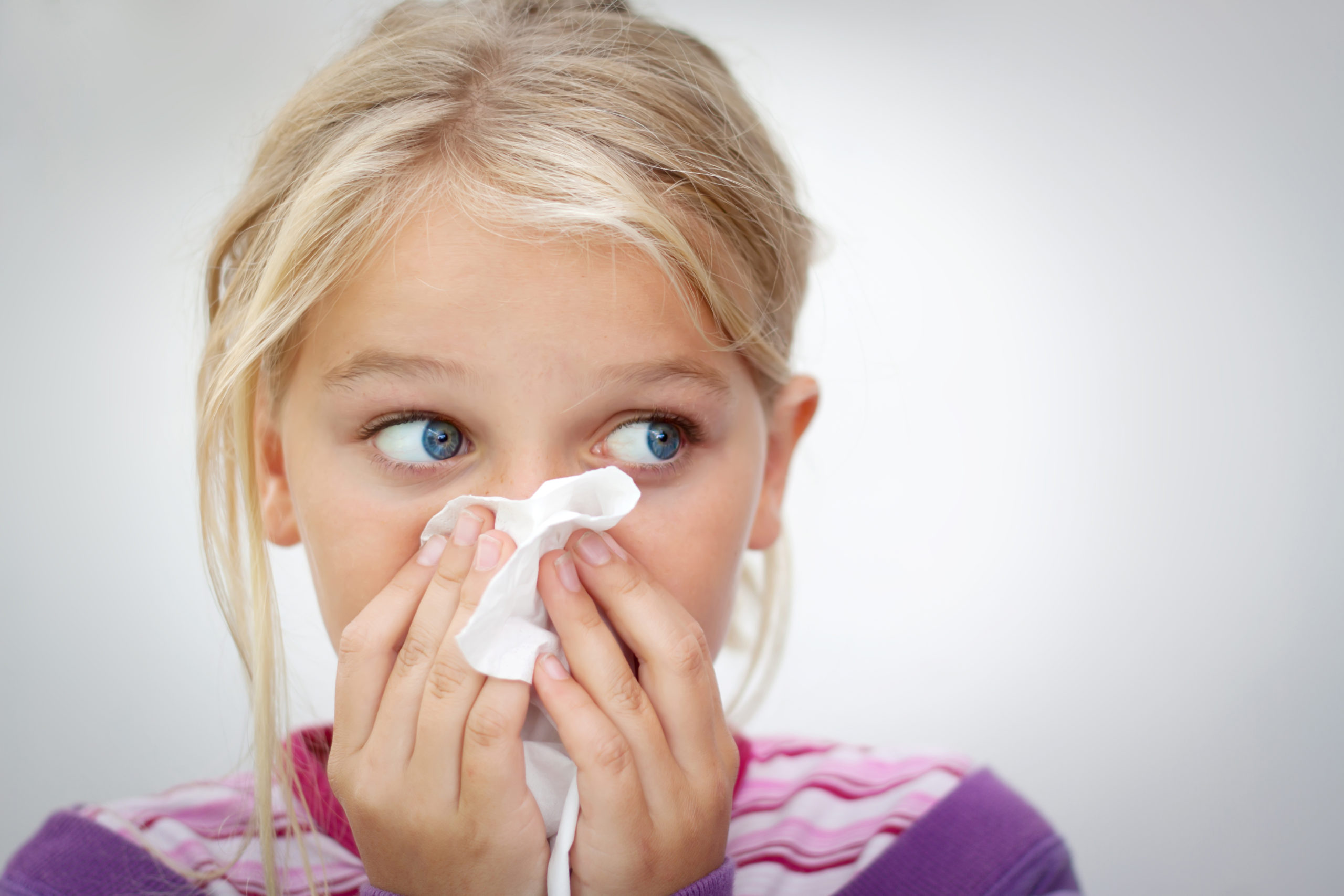Bernedoodles are one of the cutest large dog breeds that you’re likely to find, and they are increasingly becoming more popular. If you suffer from allergies, you may be wondering whether this is a good breed for you
Bernedoodles are not as hypoallergenic as dogs that have curly hair like Poodles, but they are more hypoallergenic than dogs with a double coat of fur, like Bernese Mountain Dogs. The more similar a Bernedoodle’s coat is to a Poodle’s coat, the more hypoallergenic they will be.
If you have your heart set on a Bernedoodle but you’re worried about your allergic response, here’s what you need to know about how hypoallergenic Bernedoodles really are and what you can do to reduce your allergies around them.
Contents
What Does it Mean For a Dog to be Hypoallergenic?
There is a lot of confusion and misinformation about hypoallergenic dogs. Dog allergies are a serious problem for many people. If you suffer from allergies to dogs but you want a dog in your life, you will undoubtedly seek out a hypoallergenic breed.
Unfortunately, there really is no such thing as a hypoallergenic dog. If you are allergic to dogs, you will likely experience some reaction to any breed. This is because when people are allergic to dogs they’re actually allergic to dander and saliva. All dogs have dander and saliva, so all dogs can cause an allergic response.
The advantage of dogs generally considered hypoallergenic is that they don’t drop as much hair, which means that dander and the allergens it creates stay locked in the coat where they are less likely to bother the allergy sufferer. Compared to dogs that shed a lot, the allergic response can be significantly reduced.
With air purifiers and regular brushing and bathing, the allergic response can often be reduced significantly enough that even somebody with fairly severe allergies to dogs can live with a hypoallergenic dog breed without problems. Any dog with reduced shedding offers some level of a hypoallergenic coat.
The less a dog sheds, the fewer allergic reactions they’ll cause. Even dogs with hair rather than fur, like Yorkies or Poodles, do still shed at about the same rate as human hair sheds. Therefore, dogs with very dense, curly hair are often a better option than dogs with straight hair.
This is because any shed hair is caught up in the curls, preventing it from causing a problem. Hairless dog breeds are also a great option for allergy sufferers since they have almost no hair to shed.
For the very dog allergic, a hairless breed that is bathed or wiped down daily may be the best option. The only way you’ll know whether you’re allergic to a particular dog or breed of dog is to expose yourself to them and see what kind of allergic response you have.
Understanding Doodling in Relation to Allergies
Of the dog breeds that have hair, Poodles are among the most popular for allergy sufferers. Poodles have a densely curly coat that sheds very little, which makes them a superb pick for allergy sufferers. In an attempt to combine this low shed and low allergy response causing coat with characteristics from other breeds, all sorts of dogs have been “doodled”.
The success of doodling in relation to allergies depends on how close the coat is to the Poodle. Mixes with coats that are very close in type to the Poodle’s coat, being densely curly hair, will shed much less and cause fewer allergies. Mixes with coats more similar to the breed with fur may cause as much allergic response as any other breed with fur.
Are Bernedoodles Hypoallergenic?
When it comes to Bernedoodles, the coat types almost couldn’t be more different between the parent breeds. Bernese Mountain dogs have extremely thick, lush double coats that shed prolifically year-round.
This dense coat once protected these dogs from the harsh conditions of Switzerland. Frequent shedding was necessary to keep hair fresh and doing its job with minimal upkeep from humans. Unfortunately, this coat is also one of the coat types most likely to cause a severe allergic response in people.
When a Poodle is bred to a Bernese Mountain Dog, the coat could be dense and curly like a Poodle’s or a straight double coat like the Bernese Mountain Dog. Most of the time, the coat is a combination of these two coat types.
This is how you get the gently waving tricolor coat so characteristic of the Bernedoodle. Typically, this coat will shed somewhat and cause a medium allergic response. If you want to set yourself up for success in choosing as hypoallergenic a Bernedoodle as possible, choose the puppy in the litter that has the curliest coat.
You can also look under the outer layer of hair to see whether the puppy that you are considering has a double coat. If you notice softer, shorter hairs intermixed in the coat, the puppy is more likely to shed. A coat with curly hair of all the same texture and length is much less likely to shed.
My Bernedoodle Never Shed Before, Why Are They Shedding Now?
If your Bernedoodle puppy didn’t shed or cause allergic responses, but you notice that their hair is more easily matted and that more hair is dropping around your house when they are about a year old, it is likely that your puppy’s coat is changing.
Bernese Mountain dogs have fairly consistent shedding throughout their life. The puppy coat is softer and generally shorter, but it sheds about the same amount as the adult coat.
However, Poodles go through a very distinct coat change, usually at about a year old. During this time, Poodles exchange their entire puppy coat for their adult coat, which requires some extensive shedding. If this happens to you, don’t panic. Your dog may shed for around six months or up to a year, but after that, they will likely go back to the same level of shedding they had before the puppy coat began to change.
How to Reduce Your Allergic Response to Your Bernedoodle
If you find that you are still suffering from allergies with your Bernedoodle, there are some things that you can do to reduce your allergic response. These techniques are unlikely to completely eliminate allergies, but they certainly can help.
Establish an Allergy-Free Zone
You probably want your Bernedoodle to be everywhere you are, and your Bernedoodle likely feels the same. However, it is important to establish an allergy-free space, especially if you are still experiencing allergies associated with your Bernedoodle.
The best place for most people to establish an allergy-free zone is in the bedroom. By creating a space free of allergies where you sleep, you will be able to give your system time to recover every night.
Since both you and your dog will be sleeping most of this time, it is typically the time to spend away from your dog that will be least negatively impactful on your relationship. Never allow your Bernedoodle into the allergy-free zone. Make sure the air circulation is superb and install an air purifier to eliminate any allergies that do make it into the room.
Grow Their Coat Out And Brush Often
Growing out the coat is often very unintuitive for allergy sufferers. After all, wouldn’t you think that less hair means less shedding? In fact, the more hair your Bernedoodle has, the more likely shed hair will be to be caught up in the coat instead of ending up on your floor or furniture. The curlier the coat, the more effective this tactic will be.
Frequent brushing outdoors prevents shed hair from dropping indoors. If you suffer from allergies, it’s best to brush your Bernedoodle every day or even several times a day. Since brushing is very likely to trigger an allergic reaction, it’s a good idea to wear a mask to prevent yourself from being exposed to dander as much as possible.
If you still are suffering an allergic reaction, it may be best if somebody else in your household who does not suffer from severe allergies does the brushing.
Get a Robot Vacuum
Unless you want to manually sweep or vacuum your house every day, a robot vacuum is a great idea. Robot vacuums can run several times a day to pick up any hair and dander that is shed before it can cause an allergic reaction.
Be sure that your robot vacuum is working as effectively as it should be by scrutinizing your floor in bright light to look for signs of tiny skin flakes that have dander, as well as shed hair after the vacuum has been run.
Cover Your Furniture
Whether you let your Bernedoodle on your furniture or not, it’s a good idea to cover furniture. You will track shed hair onto your furniture on your clothes and especially if you wear socks around the house.
If your Bernedoodle does go on the furniture, it is even more important to cover it. It can be nearly impossible to get all of the shed hair and dander out of upholstery, but it is much easier to remove shed hair and dander in a washing machine.
Enjoy your Bernedoodle
The Bernedoodle may not be the most hypoallergenic of dog breeds, but it is typically less irritating to allergy sufferers than a purebred Bernese Mountain Dog. By choosing a puppy with curlier hair and without indications of a double coat and by carefully managing your household to reduce allergic responses, you may be able to enjoy living with a Bernedoodle even if you suffer from allergies.

